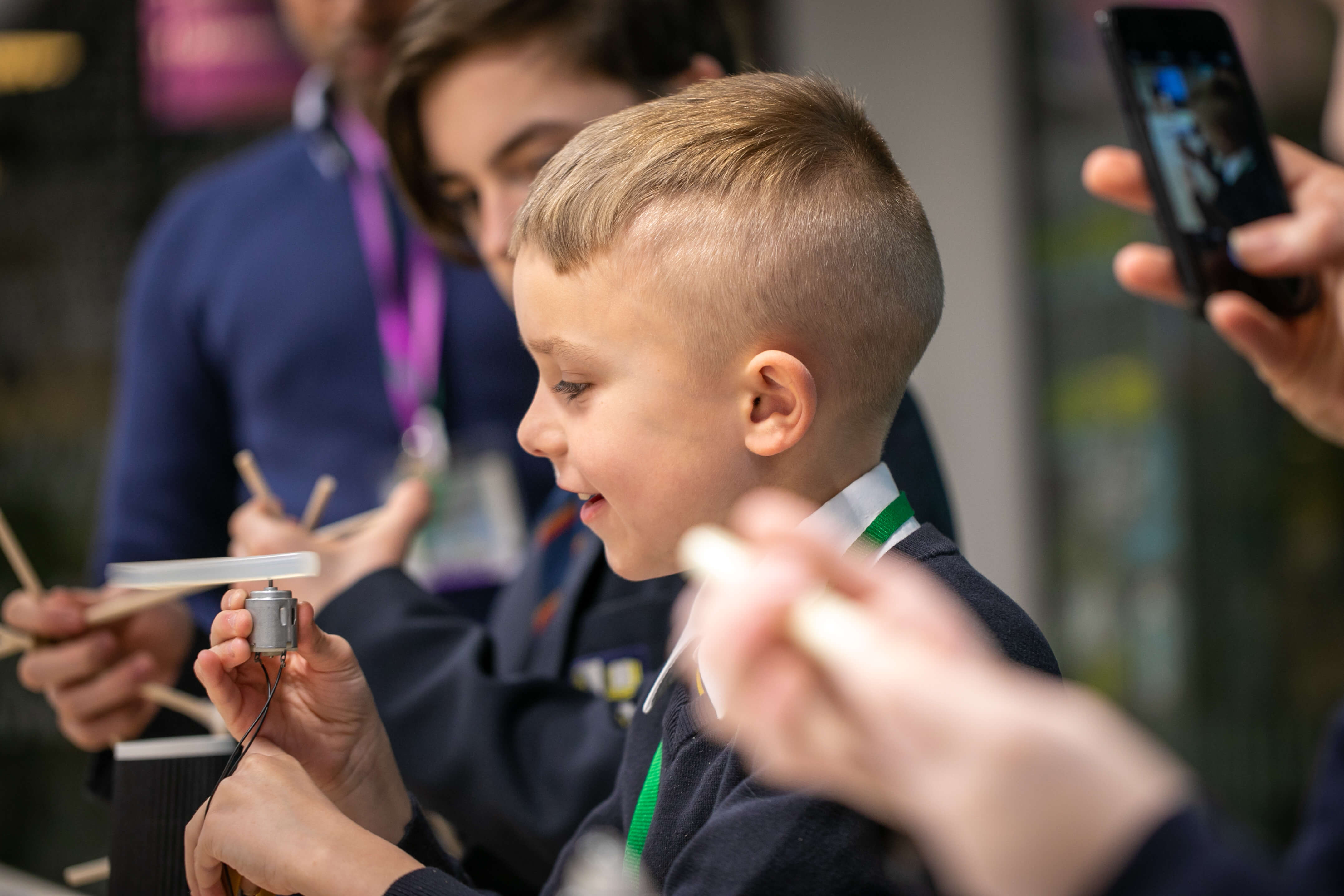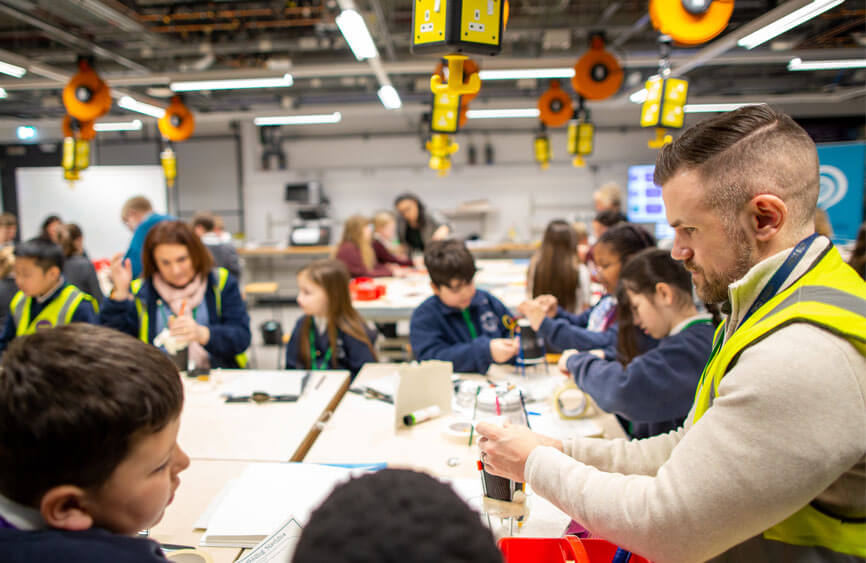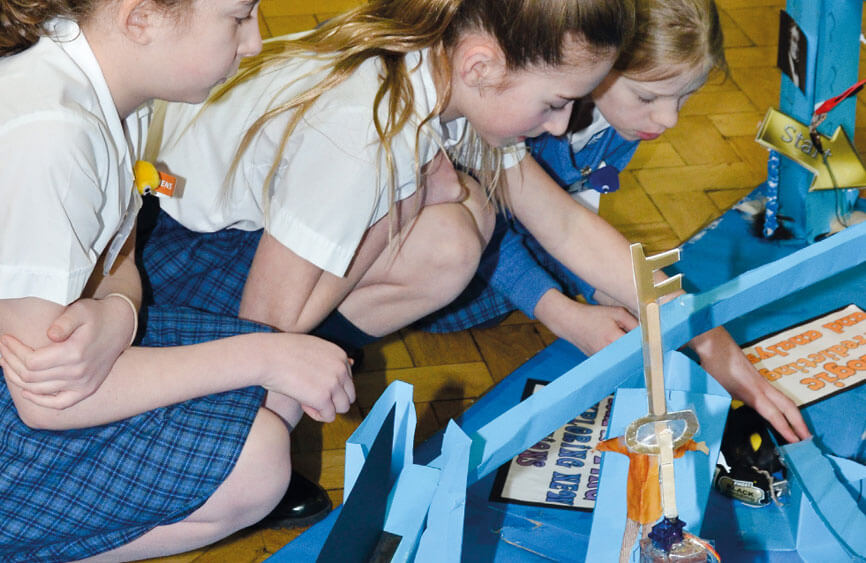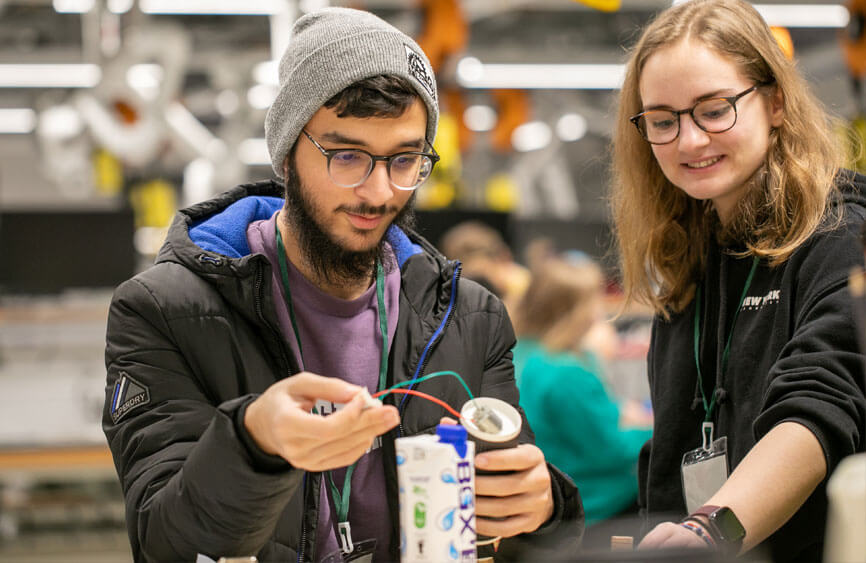Overview of the report series
Since 2014, the Academy has worked with academic partners from the University of Manchester's Science and Engineering Education Research and Innovation Hub and the University of Winchester's Centre for Real-World Learning to develop a programme of research focused specifically on exploring how Engineering Habits of Mind [EHoM] can be integrated into the real-world reality at schools.
This series of reports are part of our wider mission to ensure the education and skills system can sufficiently address the well-documented shortage of engineering skills.
These reports address the questions below.
What are the benefits and aims for engineering education in the primary classroom?
- Thinking like an Engineer, Lucas et al, University of Winchester (2014)
- Learning to be an Engineer, Lucas et al, University of Winchester and the University of Manchester (2017)
How do you plan and organise the teaching and learning of engineering in the primary classroom?
- Tinkering for Learning, Bianchi and Chippindall, the University of Manchester (2018)
- Engineering the future, Hansen et al, the University of Winchester (2018)
How do we know children are getting better at thinking and working like an engineer?
- Progressing to be an engineer, Bianchi et al, the University of Manchester (2021)
What approach should we take to embedding engineering within the mainstream curriculum?
- Progressing to be an engineer: The Approach, Bianchi and Wiskow, the University of Manchester (2023)
Progressing to be an engineer: The Approach
Our newest report builds upon the insights from over 8 years of research and development, providing a teacher-informed strategy to embed engineering within the mainstream STEM curriculum.
This report invites teachers, educators, senior leaders and policy makers to review a sector-proposition – that of a cycle and framework for engineering education in primary to lower secondary school.
It answers questions such as:
- What is engineering’s place in primary and secondary schools?
- What is the Progressing to be an Engineer (PEng) Approach?
- What does the PEng Approach include?
The Progressing to be an Engineer (PEng) Approach outlines a cycle and framework, alongside resources to support teachers to embed knowledge, skills and understanding of engineering into the mainstream STEM curriculum for 5–14-year-olds.
The PEng cycle takes the Engineering Habits of Mind [EHoMs] model and embeds these within the stages of the Engineering Design Process to provide teachers with a way to plan for pupils to think as engineers in a science, technology and maths context.
What’s special about the PEng Cycle?
- It helps to illustrate the importance of the Ask and Imagine & Plan stage to pupils.
- It presents the opportunity to revisit EHoMs during the EDP stages, embedding and consolidating pupil’s understanding in a meaningful way.
- It inspires the explicit teaching of individual EHoMs within each phase of the EDP.
- It emphasises the importance of developing the EHoM as the ‘golden thread’ that runs through ‘engineering-themed’ lessons.
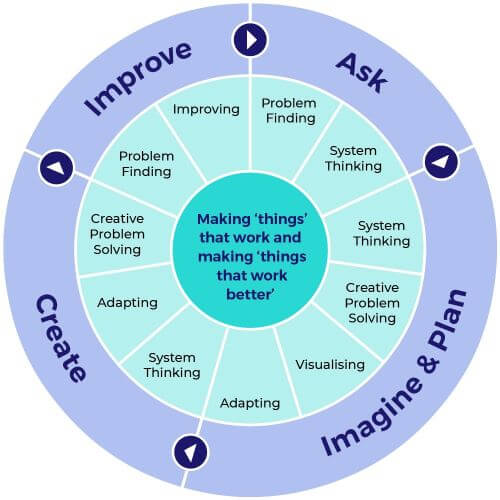
The Progressing to be an Engineer (PEng) Framework details the learning outcomes for the PEng cycle for 5–14-year-olds. It serves as a planning tool for teachers when designing lessons and curriculum experiences for pupils.
These resources give teachers real insights into how the PEng framework can be integrated into the primary and secondary STEM curriculum.
Each resource pack is tailored to individual EHoMs and are organised using a two-tier approach:
Tier 1: Generic learning – explicit teaching of each EHoM
Tier 2: Embedding learning – application of the EHom in a topic lesson.
Download the resource packs below:
Progressing to be an Engineer
Published: October 2021
This report focused upon the way in which engineering can be taught within the primary mainstream curriculum.
The outcome of this report was the creation and trialling of a draft Engineering Learning Progression Framework for primary schools, alongside five case studies which exemplify the way in which this framework can be translated into lessons.
The literature review behind this work can be found here.
Engineering the future
Training today’s teachers to develop tomorrow’s engineers
Published: Dec 2018
This report utilised a small-scale intervention to investigate the potential for supporting trainee primary teachers in computing, D&T, and science. The intervention focused on supporting trainee teachers to:
- Develop a better understanding of how engineers think using an EHoM framework.
- Showcase their ability as trainee teachers to incorporate EHoM.
- Showcase the benefits of EHoM in connecting students to engineering, and injecting real-world authenticity into the learning experience
This report demonstrated the potential of EHoM within teacher training and led to a revision of the EHoM model.
Tinkering for learning
Learning to teach engineering in the primary and KS3 classroom
Published: October 2018
This report explored the ways primary school teachers can develop teaching approaches that lead to better and more engaging learning opportunities for would-be engineers.
The focus was upon translating the concept of ‘tinkering for learning’ into a practical guide and signature pedagogy of engineering in primary schools.
Learning to be an engineer
The role of school leadership
Published: Oct 2018
This report explored the ways in which school leaders can create better and more engaging learning opportunities for would-be engineers. .
This report found that school leaders who successfully create a vision of engineering achieve it by maintaining and modelling a set of personal attributes, and enacting a set of strategies, that are all encompassed by the phrase pedagogic leadership.
Learning to be an engineer
Implications for the education system
Published: March 2017
Learning to be an Engineer identified the be three essential elements of a signature pedagogy for engineering education:
- The engineering design process.
- ‘Tinkering’ (an approach to playful experimentation).
- Authentic, sustained engagement with engineers.
Thinking like an engineer
Implications for the education system
Published: May 2014
This research series commenced with ‘Thinking like an Engineer’, which developed the six ‘Engineering Habits of mind’ [EHoM], that describe the characteristics, skills and attributes of all engineers.
Thinking like an engineer makes a strong case to suggest that if the UK wants to produce more engineers, it needs to redesign the education system around developing these EHoM. It subsequently identified the learning methods – problem-based and project-based learning, that are highly effective at developing at doing so.


